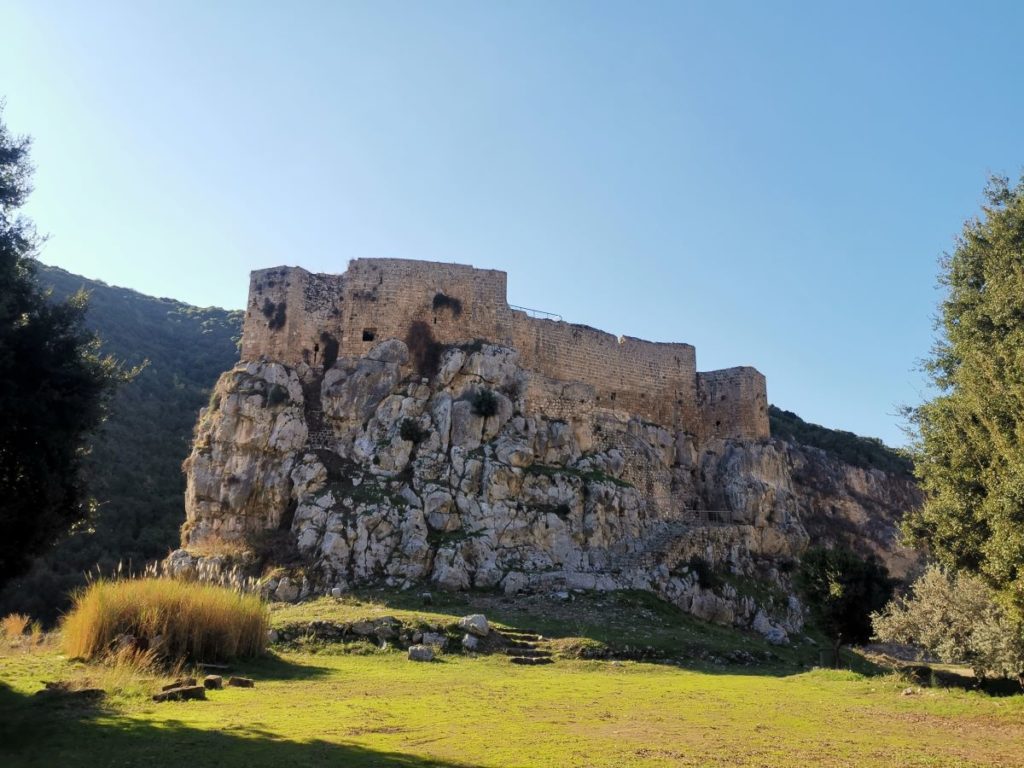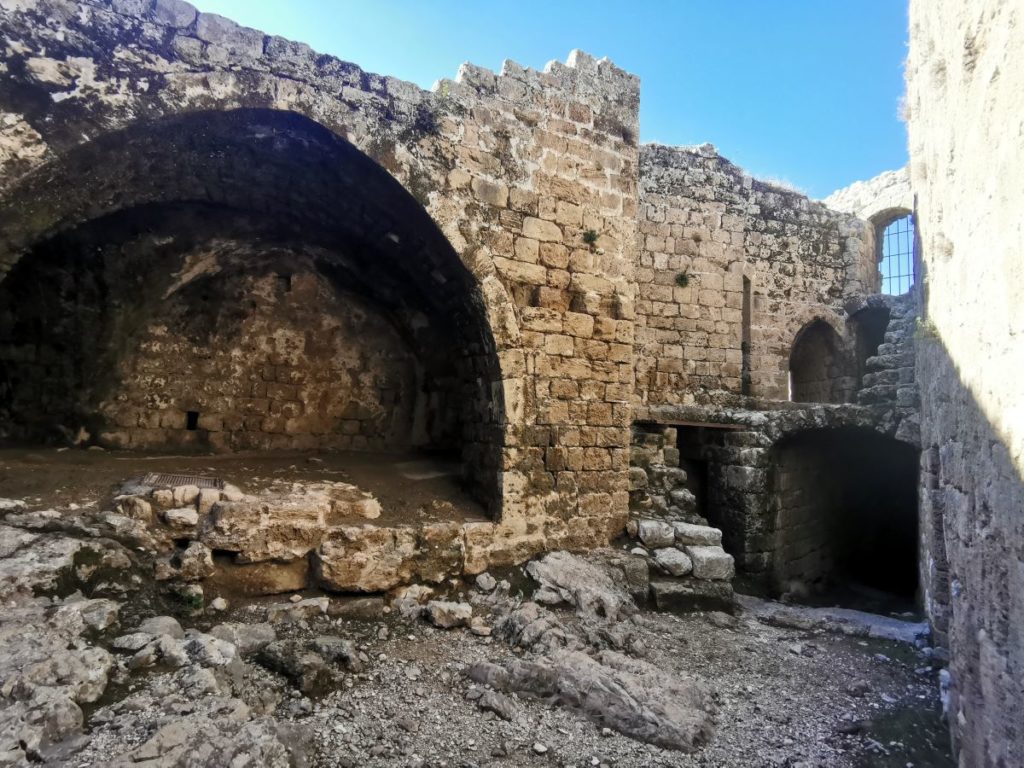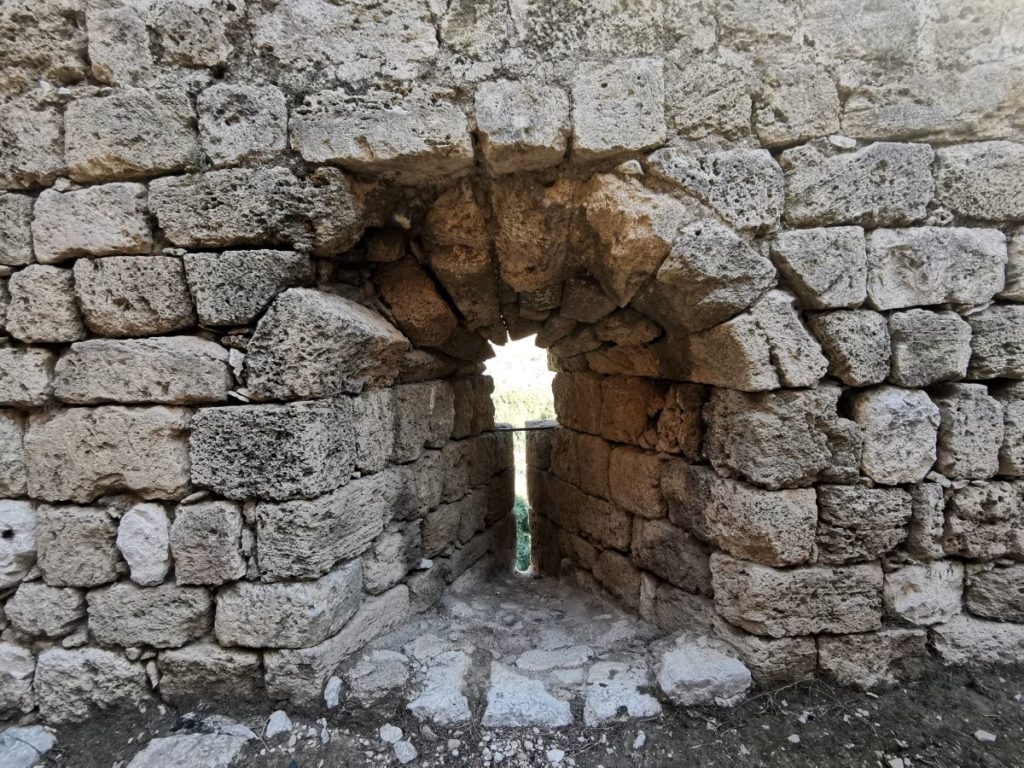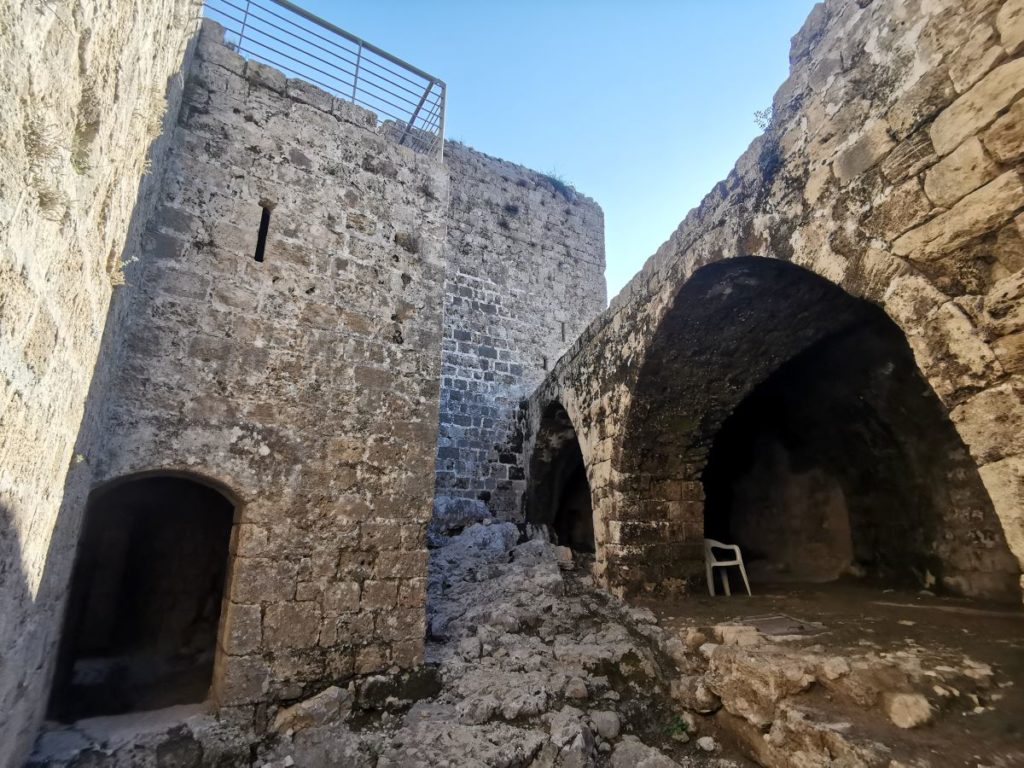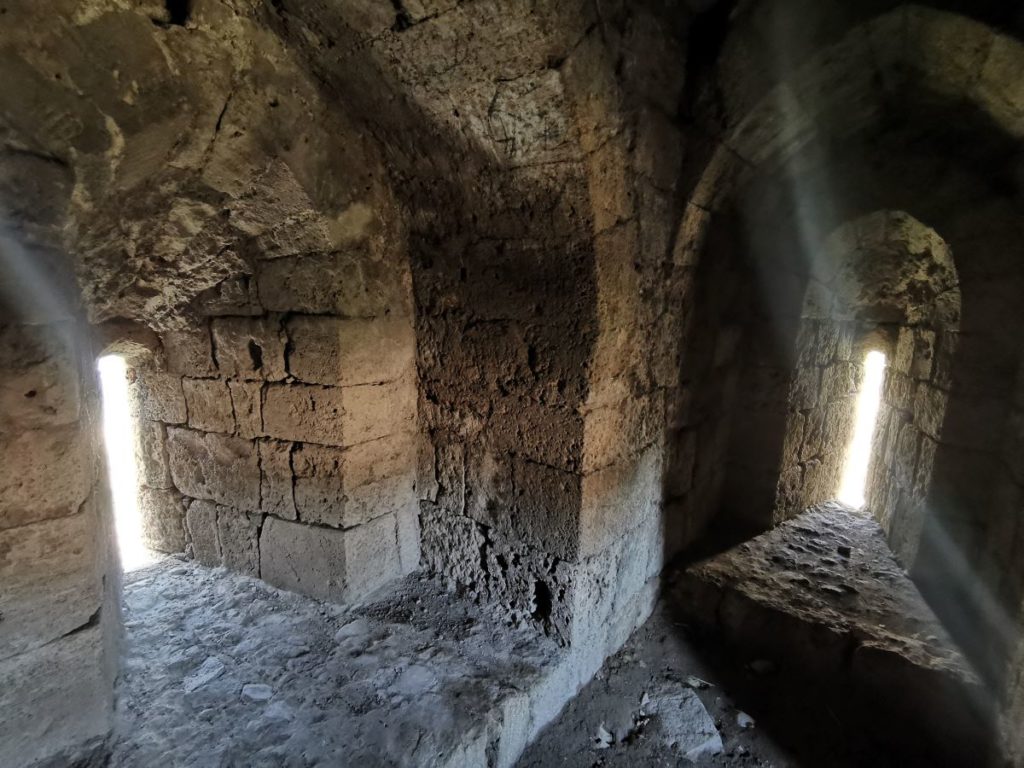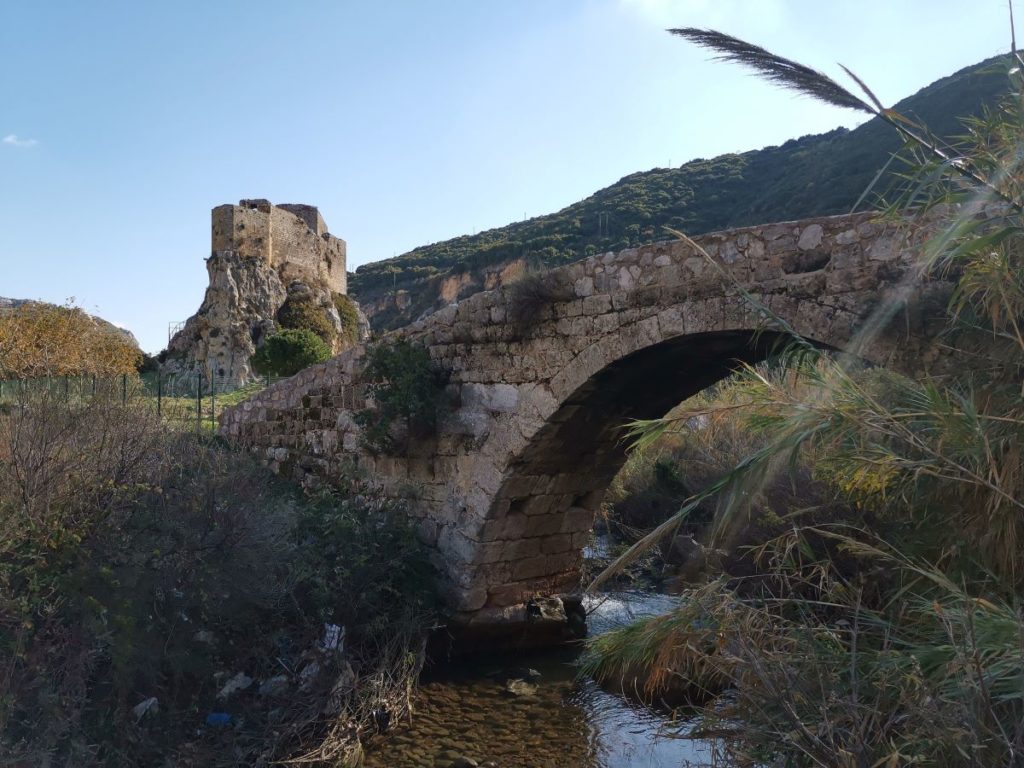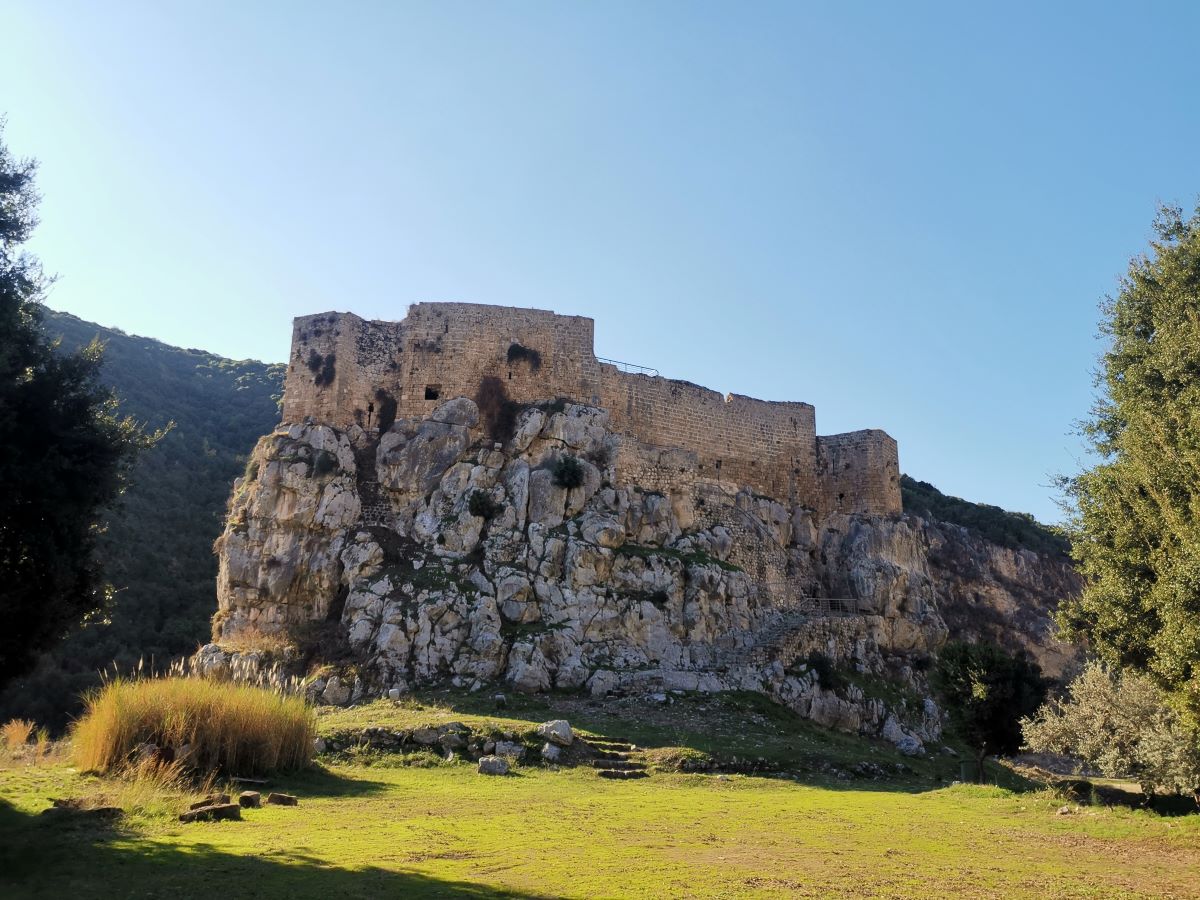Hamat village features an imposing and unique fortress known today as the Mseilha fort.
Toponym
The Mseilha fort holds several designations as mentioned in the Medieval chronicles:
“Le Puy de Connétable” is a designation given to the fort by the Franks. “Puy” in French refers to sites located on a ridge or a spur, and “Connétable” refers to a person holding a high rank office.
“Castrum Constabularii” is a designation used by the count of Tripoli, Bertrand de Saint Gilles upon gifting the fortress, as well as other lands to the the Church of Saint Lawrence in Genoa.
“Puy Guillaume” and “Passe Saint-Guillaume” are also probable designations related to the fort.
“Qala’at El Mseilha” is an Arabic designation that means a well defended and fortified fortress.
Purpose
Le Puy de Connétable is beleived to have been built during the early years of the Crusades. Its main function was to control and defend the narrow corridor that links Tripoli to Beirut: this passage replaced the coastal road of Chekka following the 551 AD earthquake that devastated the cap of Rass El Shaqa’a and made it impossible to cross.
History
1109 – Bertrand, son of Raymond de Saint Gilles, gave to the Church of Saint Lawrence in Genoa the whole town of Giblet (Byblos), along with its affiliations, the Castrum Constabularii and the third of the city of Tripoli.
1232 – The fort was a landing point for Cypriot troops who were on a campaign to besiege Beirut.
13th century AD – The fort was probably destroyed by the invading Mamluk armies like many of the Crusader fortresses.
17th century AD – The fortress was remodeled and reinforced under Fakhr El Dine II rule during his rebellion against the Ottoman rule over Lebanon.
Structure
The fort rests on a long, narrow limestone ridge, overlooking the Nahr el-Jawz River. The two meters high walls are constructed with finely cut sandstone blocks quarried from the nearby coast and built onto the edge of the ridge.
Arrow slits and large window openings can be noticed around the walls, as well as a tower on the north-west side.
Its interior offers an astonishing maze of corridors and vaulted rooms, a courtyard, cisterns and bathrooms.
At the foot of the fort’s southern side, a well renovated old mill can be seen.
The fortress is accessible by its finely renovated medieval bridge.
Chronicle
Albert d’Aix (1060 – 1120 AD), a historian who accompanied the crusaders, mentioned that the fort could contain only six men who would have been enough “to defend the passage against all those who live under the sky.”
Karim Sokhn
Tour Operator & Tour Guide
References:
http://www.orient-latin.com/fortresses/mseilha
Les Chateaux des Croises en Terre Sainte, Vol. III – La Defense du Comte de Tripoli et de la Principaute D’Antioch, 1973
